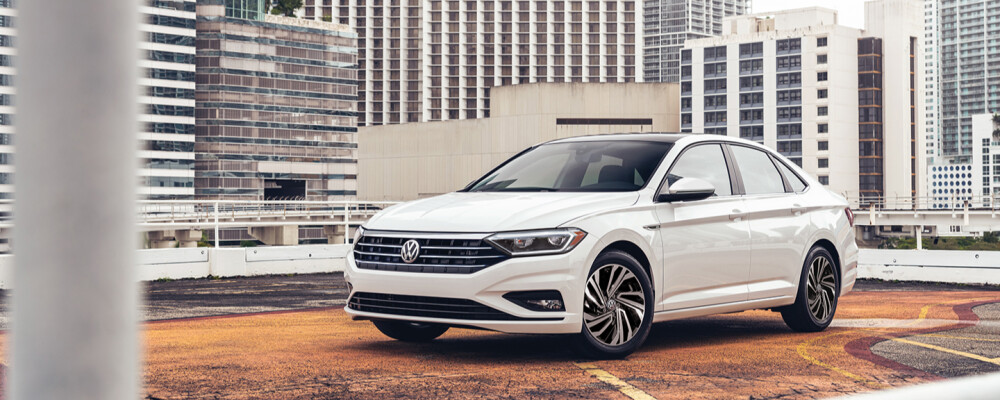
A brand fave!
When reflecting on the history of the Volkswagen brand, the Jetta quickly comes to mind! For years and through seven generations, the model has boasted a combination of European handling and all-out style. Take a look back to see why this ever-popular model has been sold by the millions — 3.2 million to be exact! This vehicle, through seven generations, continues to experience great popularity for those drivers who desire a small sedan with the latest and greatest technology, plus many more amazing features.
Here’s more…
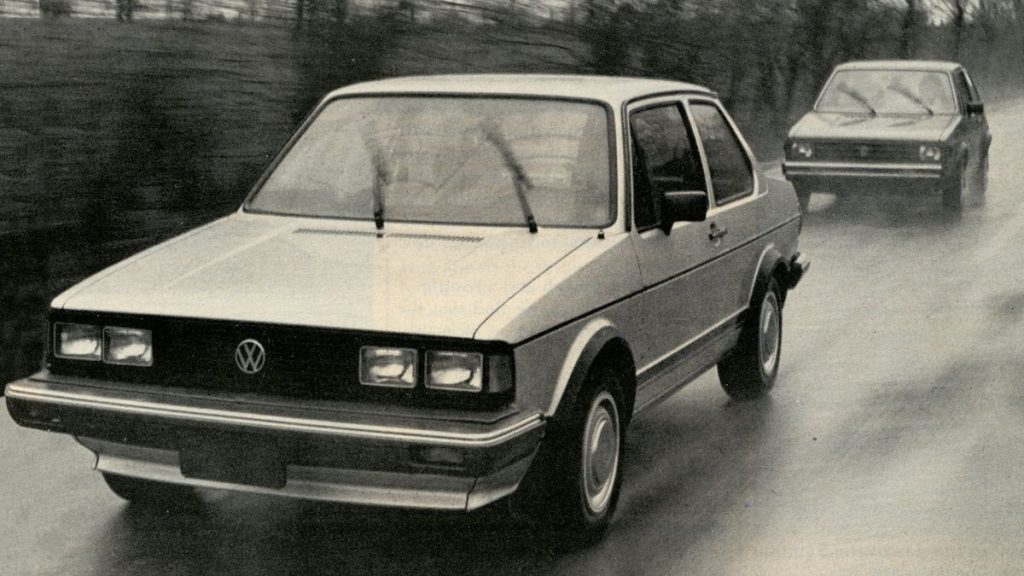
Its beginnings!
First-generation: 1979-1985
This vehicle, initially assembled at the Wolfsburg factory in Germany, took root based on the demand for a Golf-sized model with a trunk. The answer was the first model, introduced to American audiences in 1979 as a 1980 model and offering 76 horsepower and upscale styling for the subcompact sedan segment. Considered a bit more luxurious than the Rabbit, it featured optional automatic transmission and full carpeting.
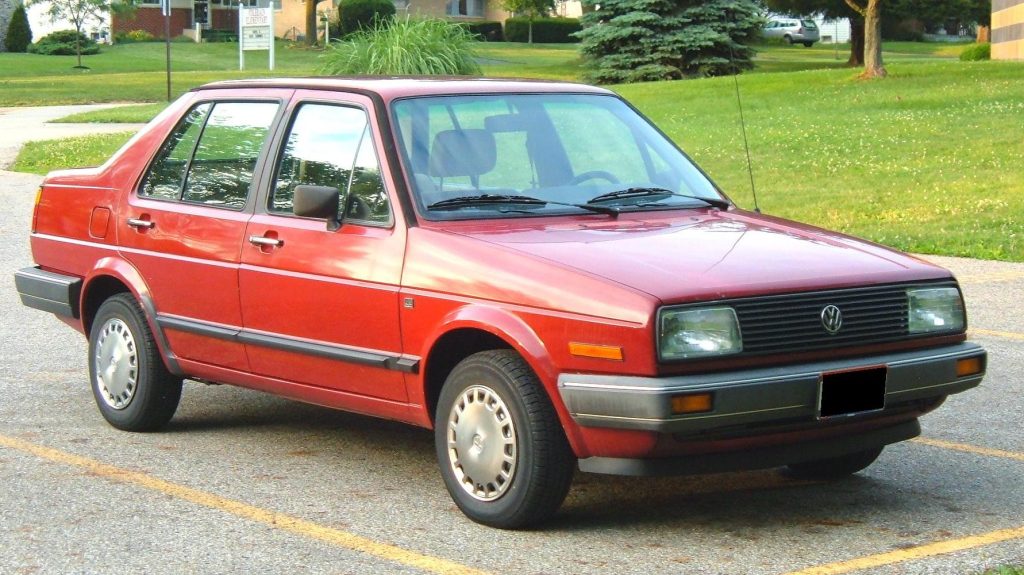
Second-generation: 1985-1992
A few years later, in 1985, after positive customer experience was realized, Volkswagen introduced the Mk2, with the horsepower growing to 100 and the vehicle boasting more visual and interior sophistication. Bigger in just about every dimension than the Mk1, this next model had the capacity to seat up to five, moving it to the compact class. This second-generation model was met with whopping success, and in 1991, the Jetta earned the title of the best-selling European Volkswagen car in North America.
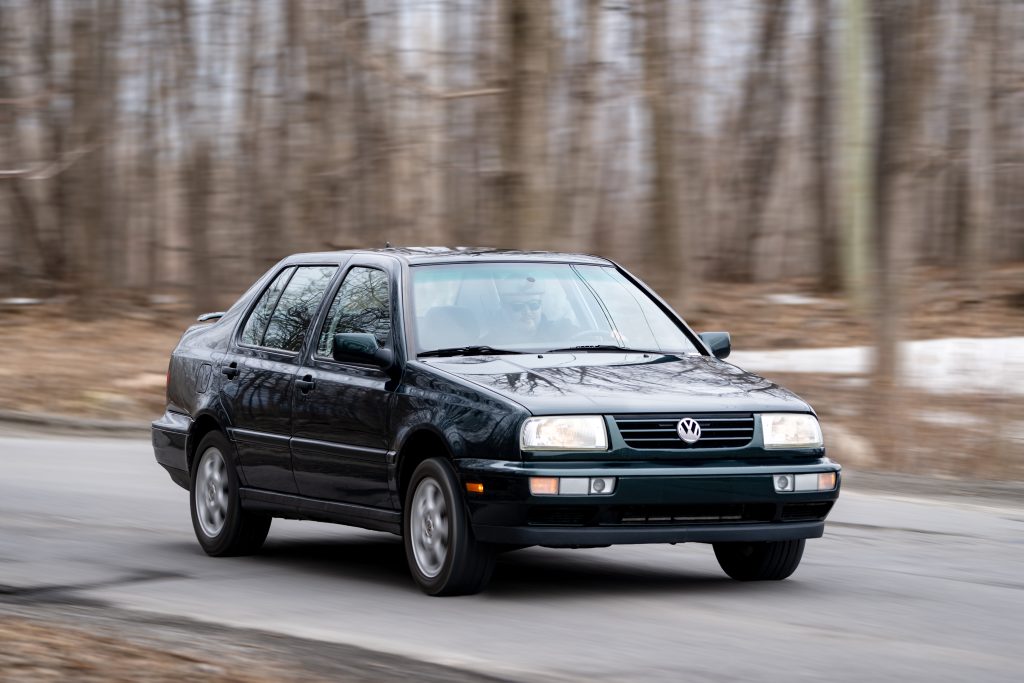
Third-generation: 1992-1998
Through the 1990s, the Jetta continued to evolve, mainly in the area of size and power with an all-new aero design introduced. The Mk3 from 1993 featured the brand’s signature narrow-angle V-6 engine with 172 hp under hood as well as an updated design and interior and the addition of key safety features. The Jetta began being noticed at this time — and significant growth followed. It also featured a rounded exterior with wider C-pillar, and trunk length was increased. New headlights were also added and the rear headlights squared and split between the panels and trunk lid. Inside was presented as leather-wrapped and with a curved dashboard. The dashboard was also installed with high-mounted vents.
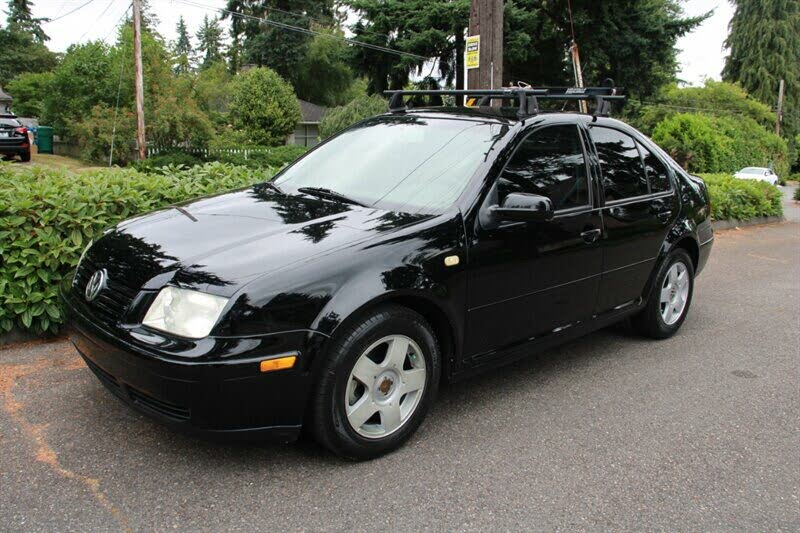
Fourth-generation: 1999-2005
The vehicle’s influence began to increase more and more with the 1999 arrival of the Jetta Mk4for the 2020 model year. This model mirrored some of the visual cues of the larger Passat and the smaller Golf. A wagon model was added at this time to the lineup and today remains the car many call when hearing the “Jetta” name. VW launched the sedan lineup at this time with different names like the Bora, Into and Jetta for different markets. A conventional grille and
squared headlights adorned the front fascia during this generation with the hood sitting lower than the trunk line, giving the car a a sporty look and feel. The wheelbase was also increased to 99 inches, and the interior saw modifications, including a flat bench at the back and pair of regular seats in the front. A dashboard featured a stereo on top of a climate control unit.
New Jetta engine versions were also available with an AWD drivetrain system, and 2.8-litre VR6 and 3.2-litre VR6 engines were introduced, as well as an optional 1.9-litre diesel engine. Eventually a six-speed automatic transmission was presented.
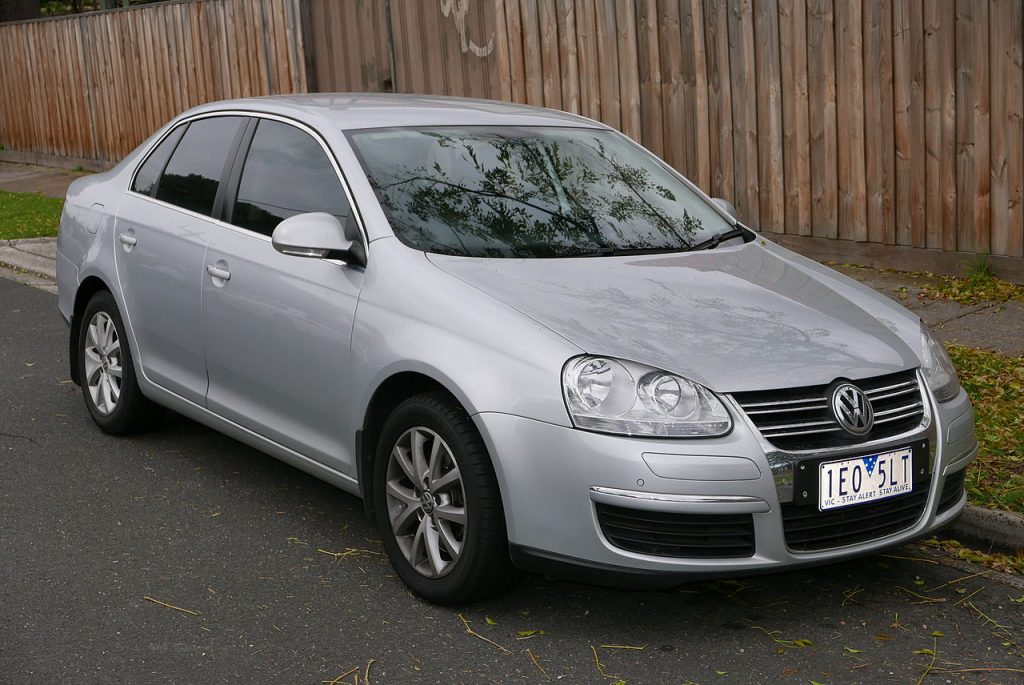
Fifth-generation: 2005-2011
In 2005, the fifth-generation Jetta made its debut, unveiled at the Los Angeles Auto Show, reflecting a major reworking of the model. This model was larger in length, width and interior space, moving it to “upscale” in terms of reference, featuring a mix of available powertrains, electric power steering and comfort and convenience due to dual-zone climate control, among other features. In the area of safety, this Jetta featured active head restraints, optional seat-mounted rear-sided and emergency brake assist. The Jetta SportWagen, with increased cargo space and a panoramic sunroof, was unveiled at the New York Auto Show in 2007.
Available in three trims, the Trendline, Sportline and Comfortable, the Jetta in this fifth generation featured a front fascia equipped with a chrome radiator grille and an optional panoramic roof. A wheelbase was increased to 101.6 inches and LED taillights made their debut, resulting in better illumination. This vehicle received more of an aerodynamic look and made larger than ever before.
A spacious cabin was also realized, with an inline five-cylinder and a 2-litre turbocharged four-cylinder engine standard for 2.0T and GLI models. These were paired with a six-speed manual transmission, and an optional six-speed dual-clutch transmission was also offered.
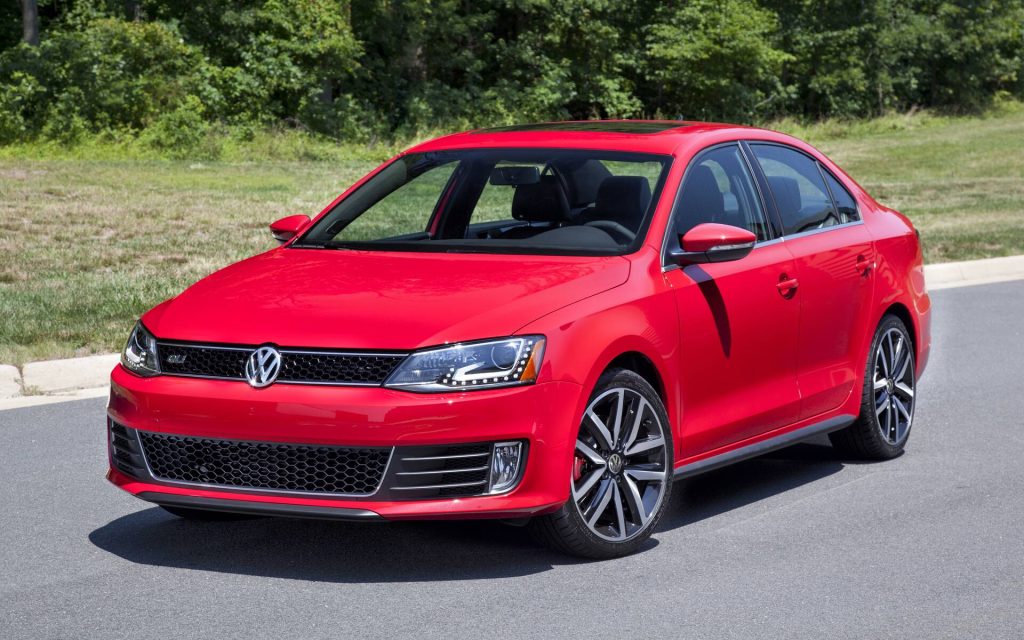
Sixth-generation: 2011-2018
In 2011, the Jetta Mk6 was presented and recalibrate for a larger audience. The only Jetta to date sold with a hybrid engine option, this Jetta also came with trims like the GLI-influenced Jetta Sport. With the Sport trim came lowered sport suspension, rear spoiler and two-toned heated seats. Powered by a 1.8-liter, four-cylinder engine, this model produced 170 horsepower and 184 Nm of torque.
A wagon body type was presented during this time, with a front fascia adorned with sharp and narrow headlights. A wheelbase was extended to 104 inches and had a ground clearance of 5.3 inches.
A centre console with air-conditioning vents was installed as was a split-folding rear bench seat back and an infotainment system in the centre stack. Upholstery was upgraded with a leatherette.
At this time, a 2.5-litre five-cylinder engine was eventually introduced which produced 170 hp and a 2.0-litre turbocharged diesel with 140 hp. These engines had options of five and six-speed manual transmissions and six-speed automatic transmissions.
This was when the Jetta received a facelift, as well as a stiffer rear suspension for better handling. This model year also saw the replacement of a 2.5-litre engine with a 1.8-litre 4-cylinder turbocharged engine.
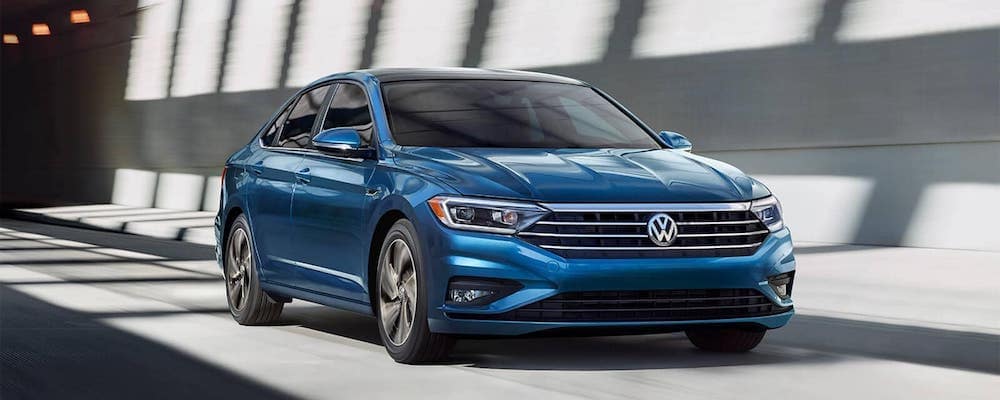
Seventh-generation: 2018 to present
It was in 2018-2019 that the current generation of the Jetta made its debut in Detroit. It was built from the successful MQB platform, offering the 1.4-liter TSI engine with 148 horsepower in 2019, as well as a number of tech and style improvements. Those included available in-car WiFi. This model, which also boasted a number of tech and style improvements, is larger than previous ones and also boasts a wide range of interior features including 10-color customizable ambient lighting, heated front seats and the Volkswagen Digital Cockpit.
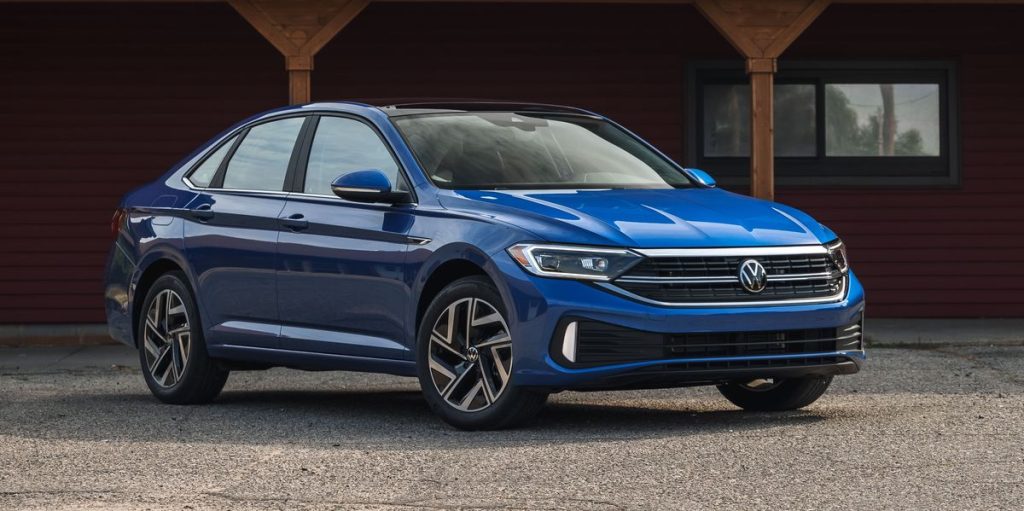
As recent as 2022, plenty of changes were on tap as part of a mid-cycle refresh. That included the adoption of the 1.5-liter turbocharged and direct-injection EA211 engine found in the recently-launched Taos compact SUV, making 158 hp and 184 lb-ft of torque. There are also trim offerings presented, including the new Sport trim. The Jetta saw changes on the exterior at this time as well, including updates made clear in revised front and rear ends, new colors and wheels as well as a modified front fascia with two chromed bars and a VW logo in the middle.
The GLI models featured a red strip across the bumper. Inside, a standard Digital Cockpit and Volkswagen Car-Net telematics with WiFi capability was realized. There were also key and beneficial safety features like Front Assist, Blind Spot Monitor and Rear Traffic Alert as standard, with IQ.DRIVE technology presented on every trim level. Spacious seating, efficient engines and a comfortable ride was realized here, with the Jetta propelling to one of the top picks for family and company cars.
On pace with Americans who desire flexibility in a small sedan without compromising usability or technology, the Jetta has delivered — and then some! Through seven generations, its popularity has only grown. See what this brand fave is all about, and reserve yours today!



